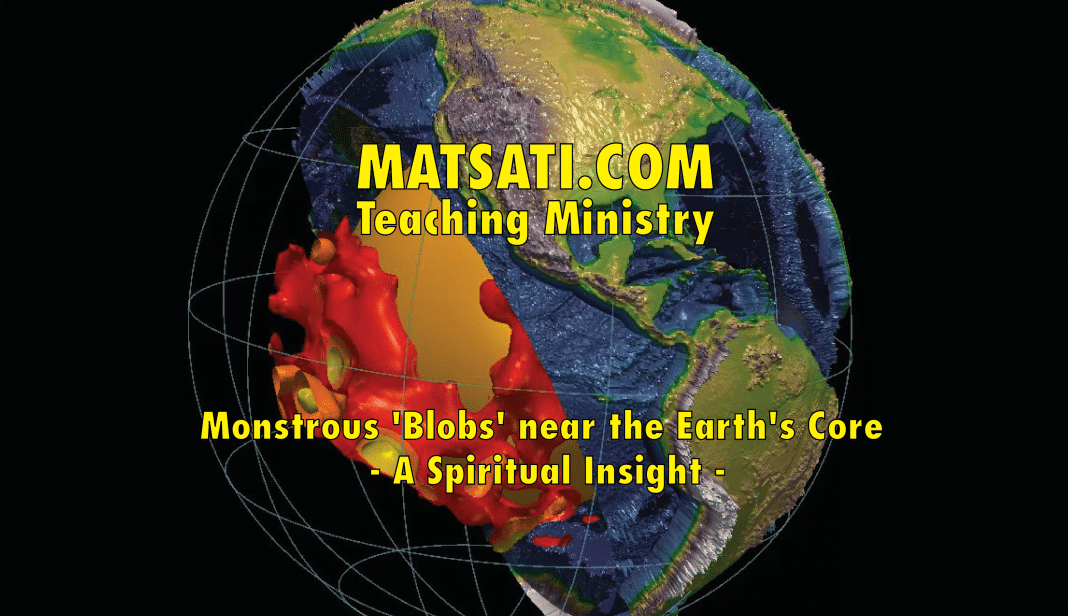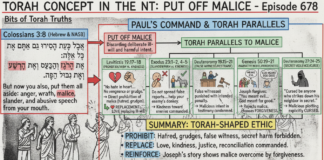The Earth is covered by sensors (seismometers) that have been put in place to measure seismic activity around the world. When an earthquake occurs, the seismic waves propagate through the planet from one side to the other. Scientists have known when an earthquake happens on the other side of the Earth its vibrations can be measured. Thirty years of measurements reveal how seismic waves slow down while propagating through certain places inside the Earth. The slowing down suggests something mysterious is going on in the center of the Earth, and these regions within the earth are called “ultra low-velocity zones.” Recently a paper was published in the Journal Science [1] where scientists have taken 30 years of seismographic data in an attempt to analyze the solid structures in the inner-Earth.
References
- D. Kim, V. Lekić, B. Ménard, D. Baron, M. Taghizadeh-Popp, “Sequencing seismograms: A panoptic view of scattering in the core-mantle boundary region,” Science 12 Jun 2020: Vol. 368, Issue 6496, pp. 1223-1228 DOI: 10.1126/science.aba8972
- Sanne Cottaar, Vedran Lekic,“Morphology of seismically slow lower-mantle structures,” Geophysical Journal International, Volume 207, Issue 2, 1 November 2016, Pages 1122–1136, https://doi.org/10.1093/gji/ggw324
The researchers reported [1] within the Earth where the solid mantle meets the molten outer core there are strange continent sized blobs of hot rock that project out for hundreds of miles in every direction. These structures form underground mountains, and researchers call them “Thermo-chemical piles,” “large low-shear velocity provinces,” and/or just “the Blobs.” Geologists are not certain how these mountainous structures have formed, but they are massive. The largest blobs sit below the Pacific Ocean and the African Continent. Scientists have determined these two massive structures account for nearly 10% of the entire mass of the Earth;s mantle. [2] The claim is if these structures were placed on the surface of the earth, they would extend 100 times higher than Mount Everest. Scientists believe these structures may in fact be even larger. In the study that was published in the Journal Science, [1] the researchers obtained more detail, discovering never before detected features, along the edge of the Pacific blob. The structures that were located measure thousands of kilometers across in scale, much larger than previously determined.
The extreme heat and isolated nature of the blobs that are located deep in the Earth’s interior, geologists are able to understand their shape and size by analyzing seismic waves that are generated by earthquakes that travel through them. These regions are hot and dense which slow the incoming waves by up to 30% relative to the surrounding mantle. The regions that slow the propagation of the seismic waves the most are known as ultra low velocity zones and occur near the edges of the blobs. In order to analyze 30 years of data, Researchers wrote a computer algorithm to process and sort the collection of Sdiff wave-forms across the Pacific basin. The research team was able to analyze 7,000 seismograms collected from between 1990 and 2018 that was measured by hundreds of earthquakes that were of magnitude 6.5 or greater. The seismic waves that were generated in Asia and Oceania traveled through the Earth and the Pacific Ocean mantle blob before reaching the seismometers in the USA. These 7,000 seismic waves revealed enormous sections of the ultra low velocity zones that were never detected before. Another region was also detected below the Marquesas Islands in the South Pacific Ocean which measured to be more than 620 miles (1000 kilometers) long. The analysis also revealed the blob below the Hawaiian Islands are considerably larger than previously thought. These new results reveal the blobs along the core-mantle boundary are more numerous than previously thought. Researchers theorize that the ultra low velocity zones may feed hot spots, the regions that lead to volcanic hot spots on the surface of the Earth. This explains why the largest blobs are below volcanic island chains like the Hawaiian and Marquesas Islands. The computer algorithms allowed for this type of analysis and open up more questions than answers regarding the mysteries near the center of the Earth. At the moment, this is what we know, but the interior of the Earth remains a mystery and very exciting field of research!
The Spiritual Insights that we receive from this type of research is how this reminds us of the concept of Hell. What is the location of Hell? The idea of these blobs that are imaged using seismic waves at the center of the earth where there is fire and heat draws in the imagery of Hell’s location. Where does the concept of Hell come from? Parashat Korach speaks of something that happened to men, women, and children who had hatred in their hearts towards Moshe and the Lord God in heaven. This is what we read according to Bamidbar / Numbers 16:31-33, לא וַיְהִי כְּכַלֹּתוֹ לְדַבֵּר אֵת כָּל-הַדְּבָרִים הָאֵלֶּה וַתִּבָּקַע הָאֲדָמָה אֲשֶׁר תַּחְתֵּיהֶם: לב וַתִּפְתַּח הָאָרֶץ אֶת-פִּיהָ וַתִּבְלַע אֹתָם וְאֶת-בָּתֵּיהֶם וְאֵת כָּל-הָאָדָם אֲשֶׁר לְקֹרַח וְאֵת כָּל-הָרְכוּשׁ: לג וַיֵּרְדוּ הֵם וְכָל-אֲשֶׁר לָהֶם חַיִּים שְׁאֹלָה וַתְּכַס עֲלֵיהֶם הָאָרֶץ וַיֹּאבְדוּ מִתּוֹךְ הַקָּהָל: 16:31 As he finished speaking all these words, the ground that was under them split open; 16:32 and the earth opened its mouth and swallowed them up, and their households, and all the men who belonged to Korah with their possessions. 16:33 So they and all that belonged to them went down alive to Sheol; and the earth closed over them, and they perished from the midst of the assembly. (NASB) Moshe said that God was going to do something that has never been seen or done before, due to their anger / hatred. The earth which was underneath them split open and they descended into Hell (שְׁאֹלָה, Sheol, Gehenna). The Hebrew Scriptures state וַתִּבָּקַע הָאֲדָמָה “the earth (הָאֲדָמָה) split” and וַתִּפְתַּח הָאָרֶץ אֶת-פִּיהָ “the earth (הָאָרֶץ) opened its mouth.” In the past we have discussed the differences between the use of the Hebrew words אֲדָמָה and הָאָרֶץ. The interesting feature here as a reference to the ground (הָאֲדָמָה) and the land or earth (הָאָרֶץ) these words are being connected to Gehenna / Hell and anger. Nachmanides explains saying the Torah had to mention both הָאֲדָמָה and הָאָרֶץ as “opening” in this verse. Had the Torah only written that the ground split open, the phenomenon could have been considered as an ordinary earthquake, although Moses had predicted the time and the place. Therefore, the Torah added the words “the earth opened its mouth” to explain to us that a great miracle, unparalleled, had happened here. This miraculous event had been predicted as a בריאה, a new creation. We are also told that the ground which opened up had returned to its original appearance as distinct from an earthquake which leaves behind clear evidence that there had been an upheaval. (Rabbeinu Bahya, Bamidbar / Numbers 16:31 Part 1) The significance of this Torah portion reveals to us the spiritual dangers of anger and hatred, and its ultimate resting place is in Gehenna / Hell. The text also states וְאֵת כָּל-הָרְכוּשׁ “all their property” disappeared with them, revealing to us that not only the people were destroyed, but all of their belongings including their tents, money, pets, everything was swallowed up, descended into the darkness. The reason these things were also destroyed is due to their potential to become an idol in our lives. The Talmud Bavli Sanhedrin 106 interprets the descent into the earth as being coupled to burning, they were swallowed up in darkness and burned in the fire, which is the definition of Hell. This is derived from Bamidbar / Numbers 26:10 “it swallowed them as well as Korach when the assembly died as the fire consumed the 250 men.” What these things teach us is how these men who held onto anger were both swallowed up in darkness and consumed by fire. The Zhoar writes metaphorically concerning hell. The Zohar states the firmament is a division between the waters above and the waters blow. This is visually connected to the Sefirot a graphical picture of the 10 attributes / emanations of God through which He created the physical and the spiritual worlds. The Zohar identifies three forces that permeate all of existence and parallel this to the three pillars of the Sefirot. The central pillar is the binding force which joins the two sides of the Sefirot together. This is metaphorically related to the firmament that separates that which is above from that which is below, and also describes our lives as having the ability to share (symbolized as the right side) and the ability to receive (symbolized by the left side) and the middle column being our freedom of choice (free will). Using the freedom of choice, we resist the desire to receive (to take) and nurture the desire to share (to give). This concept is drawn out by the Zohar concerning the second day of creation. On the second day of creation, a dispute broke out, when the left side (to take) was aroused disputing against the right side (to give), the Zohar states that the fire of anger between the two sides was fierce. Kabbalistically, it is said that from this dispute, from this fire of anger, Gehenna was created. Gehenna (Hell) was awakened and created by the left, and the left cleaved to it. This is interpreted as “whoever wants to strengthen the left shall fall into Gehenna which originates from the left.” This is a remarkably interesting way of interpreting hatred / anger, and its connection being founded upon Hell itself. The concepts presented here in the Zohar describe these two sides (love and hate) and how there is the need for an intermediary to make peace.
In the Apostolic Writings, the Apostle Paul wrote according to Ephesians 4:9 (KJV) that Yeshua ascended into heaven, “he also descended . . . into the lower parts of the earth.” Because of the way Paul wrote this, some believe “the lower parts of the earth” as a reference to Hell. Other translations such as the NIV writes, “he also descended to the lower, earthly regions.” Regardless of the way this is translated, the imagery of Hell being inside the Earth is an interesting one. The Jewish Encyclopedia states the following concerning the grave / Sheol / Hell.
SHEOL (): By: Emil G. Hirsch (Jewish Encyclopedia)
Position and Form. Hebrew word of uncertain etymology, synonym of “bor” (pit), “abaddon” and “shaḥat” (pit or destruction), and perhaps also of “tehom” (abyss). Biblical Data: It connotes the place where those that had died were believed to be congregated. Jacob, refusing to be comforted at the supposed death of Joseph, exclaims: “I shall go down to my son a mourner unto Sheol” (Gen. xxxvii. 36, Hebr.; comp. ib. xlii. 38; xliv. 29, 31). Sheol is underneath the earth (Isa. vii. 11, lvii. 9; Ezek. xxxi. 14; Ps. lxxxvi. 13; Ecclus. [Sirach] li. 6; comp. Enoch, xvii. 6, “toward the setting of the sun”); hence it is designated as (Deut. xxxii. 22; Ps. lxxxvi. 13) or (Ps. lxxxviii. 7; Lam. iii. 55; Ezek. xxvi. 20, xxxii. 24). It is very deep (Prov. ix. 18; Isa. lvii. 9); and it marks the point at the greatest possible distance from heaven (Job xi. 8; Amos ix. 2; Ps. cxxxix. 8). The dead descend or are made to go down into it; the revived ascend or are brought and lifted up from it (I Sam. ii. 6; Job vii. 9; Ps. xxx. 4; Isa. xiv. 11, 15). Sometimes the living are hurled into Sheol before they would naturally have been claimed by it (Prov. i. 12; Num. xvi. 33; Ps. lv. 16, lxiii. 10), in which cases the earth is described as “opening her mouth” (Num. xvi. 30). Sheol is spoken of as a land (Job x. 21, 22); but ordinarily it is a place with gates (ib. xvii. 16, xxxviii. 17; Isa. xxxviii. 10; Ps. ix. 14), and seems to have been viewed as divided into compartments (Prov. vii. 27), with “farthest corners” (Isa. xiv. 15; Ezek. xxxii. 23, Hebr.; R. V. “uttermost parts of the pit”), one beneath the other (see Jew. Encyc. v. 217, s. v. Eschatology). Here the dead meet (Ezek. xxxii.; Isa. xiv.; Job xxx. 23) without distinction of rank or condition—the rich and the poor, the pious and the wicked, the old and the young, the master and the slave—if the description in Job iii. refers, as most likely it does, to Sheol. The dead continue after a fashion their earthly life. Jacob would mourn there (Gen. xxxvii. 35, xlii. 38); David abides there in peace (I Kings ii. 6); the warriors have their weapons with them (Ezek. xxxii. 27), yet they are mere shadows (“rephaim”; Isa. xiv. 9, xxvi. 14; Ps. lxxxviii. 5, A. V. “a man that hath no strength”). The dead merely exist without knowledge or feeling (Job xiv. 13; Eccl. ix. 5). Silence reigns supreme; and oblivion is the lot of them that enter therein (Ps. lxxxviii. 13, xciv. 17; Eccl. ix. 10). Hence it is known also as “Dumah,” the abode of silence (Ps. vi. 6, xxx. 10, xciv. 17, cxv. 17); and there God is not praised (ib. cxv. 17; Isa. xxxviii. 15). Still, on certain extraordinary occasions the dwellers in Sheol are credited with the gift of making knowntheir feelings of rejoicing at the downfall of the enemy (Isa. xiv. 9, 10). Sleep is their usual lot (Jer. li. 39; Isa. xxvi. 14; Job xiv. 12). Sheol is a horrible, dreary, dark, disorderly land (Job x. 21, 22); yet it is the appointed house for all the living (ib. xxx. 23). Return from Sheol is not expected (II Sam. xii. 23; Job vii. 9, 10; x. 21; xiv. 7 et seq.; xvi. 22; Ecclus. [Sirach] xxxviii. 21); it is described as man’s eternal house (Eccl. xii. 5). It is “dust” (Ps. xxx. 10; hence in the Shemoneh ‘Esreh, in benediction No. ii., the dead are described as “sleepers in the dust”).
God As Its Ruler: God’s rulership over it is recognized (Amos ix. 2; Hos. xiii. 14; Deut. xxxii. 22; I Sam. ii. 6 [Isa. vii. 11?]; Prov. xv. 11). Hence He has the power to save the pious therefrom (Ps. xvi. 10, xlix. 16, the text of which latter passage, however, is recognized as corrupt). Yet Sheol is never satiated (Prov. xxx. 20); she “makes wide her soul,” i.e., increases her desire (Isa. v. 14) and capacity. In these passages Sheol is personified; it is described also as a pasture for sheep with death as the shepherd (Ps. xlix. 15). From Sheol Samuel is cited by the witch of En-dor (I Sam. xxviii. 3 et seq.). As a rule Sheol will not give up its own. They are held captive with ropes. This seems to be the original idea underlying the phrase (II Sam. xxii. 6; Ps. xviii. 6; R. V., verse 5, “the cords of Sheol”) and of the other expression, (Ps. cxvi. 3; R. V. “and the pains of Sheol”); for they certainly imply restraint or capture. Sheol is used as a simile for “jealousy” (Cant. viii. 7).
We are told in Job 10:21-22 (בְּטֶ֣רֶם אֵ֭לֵךְ וְלֹ֣א אָשׁ֑וּב אֶל־אֶ֖רֶץ חֹ֣שֶׁךְ וְצַלְמָֽוֶת׃ Before I depart—never to return— For the land of deepest gloom; אֶ֤רֶץ עֵיפָ֨תָה ׀ כְּמ֥וֹ אֹ֗פֶל צַ֭לְמָוֶת וְלֹ֥א סְדָרִ֗ים וַתֹּ֥פַע כְּמוֹ־אֹֽפֶל׃ (פ) A land whose light is darkness, All gloom and disarray, Whose light is like darkness.) that the realm of the dead is in the earth. It is a “land without return.” The origin of the concept of Hell, the question arises whether the Biblical concept is borrowed from the Assyrians or is an independent development from elements common to both and found in many primitive religions. It is important to realize that most of the passages in which mention is made of Sheol or its synonyms are of exilic or post-exilic times. We do however find Sheol mentioned directly in the Torah in Bamidbar / Numbers 16:33 “So they and all that belonged to them went down alive to Sheol; and the earth closed over them, and they perished from the midst of the assembly.” (NASB, וַיֵּ֨רְד֜וּ הֵ֣ם וְכָל־אֲשֶׁ֥ר לָהֶ֛ם חַיִּ֖ים שְׁאֹ֑לָה וַתְּכַ֤ס עֲלֵיהֶם֙ הָאָ֔רֶץ וַיֹּאבְד֖וּ מִתּ֥וֹךְ הַקָּהָֽל׃). The mention Sheol here in the Torah is coupled to a miracle of God as a punishment for rebellion and suggests the Biblical concept of Sheol represents an independent evolution as opposed to having borrowed the concept of hell from other religions or nations. In the Torah Sheol is also described as a family grave on a large scale (Various examples in Bereshit / Genesis).
Bereshit / Genesis 37:35
(35) And all his sons and all his daughters rose up to comfort him; but he refused to be comforted; and he said: ‘Nay, but I will go down to the grave, to my son mourning.’ And his father wept for him.
Bereshit / Genesis 42:38
(38) And he said: ‘My son shall not go down with you; for his brother is dead, and he only is left; if harm befall him by the way in which ye go, then will ye bring down my gray hairs with sorrow to the grave.
Bamidbar / Numbers 16:30
(30) But if the LORD make a new thing, and the ground open her mouth, and swallow them up, with all that appertain unto them, and they go down alive into the pit, then ye shall understand that these men have despised the LORD.’
Isaiah 38:18
(18) For the nether-world cannot praise Thee, Death cannot celebrate Thee; They that go down into the pit cannot hope for Thy truth.
Tehillim / Psalms 88:4-7
(4) For my soul is sated with troubles, And my life draweth nigh unto the grave. (5) I am counted with them that go down into the pit; I am become as a man that hath no help; (6) Set apart among the dead, Like the slain that lie in the grave, Whom Thou rememberest no more; And they are cut off from Thy hand… (7) Thou hast laid me in the nether-most pit, In dark places, in the deeps.
Various theories on the location of hell have been put forward gthroughout history. The traditional view is that hell is in the center of the earth. This is what is being drawn out from the Scientific research on discovering blobs near the Earth’s core. Some have proposed that hell is descriptive of a black hole in the sense of what would take place when one falls into a black hole (i.e. extreme pressure, heat, fire, the tearing apart, etc all derived from the gravity differential as one draws nearer to the center of mass). In the Tanach (OT) generally the word translated “hell” is Sheol; whereas in the NT Hell is written in Greek as Hades (meaning “unseen”) and Gehenna (“the Valley of Hinnom”). Sheol is also translated as “pit” and “grave.” Both Sheol and Hades refer to a temporary abode of the dead before judgment (see Tehillim / Psalms 9:17 and Revelation 1:18). Yeshua speaks of Gehenna as referring to an eternal state of punishment for the wicked (Mark 9:43).
The reason Hell is described as “below us,” i.e. in the center of the Earth, may be derived from passages such as Luke 10:15 which states “And thou, Capernaum, which art exalted to heaven, shalt be thrust down to hell” (KJV). Also, we read in the Tanach about King Saul seeking the medium to call up the spirit of Samuel, we read in 1 Samuel 28:13-15, the witch in Endor saw Samuel “coming up out of the ground.” This however does not provide for us a geographic location of hell. Capernaum’s being thrust “down” may be a reference to their being condemned as opposed to an actual physical direction.
The point of the scientific research draws out these concepts about Hell, and the significance of these things is related to its significance throughout all of Scripture, in the Torah, in the Tanach, and in the NT depictions of the place of the wicked and those who are not part of the family of God. The Torah Portion Korach helps us understand that we should flee from anger and hatred and the significance of drawing near to the Lord as opposed to rejecting the Lord God and His commands. The Kabbalistic interpretation on the firmament causing a separation, our freedom of choice, the division between the left and the right (i.e. the creation account on the waters above from the waters below), Heaven and Gehenna (Hell), this teaches us about the need for an intermediary, the Anointed One, the Messiah sent from God! Note how this Messiah is the one who makes peace and prevents us from literally descending into hell! It is easy to see the many NT connections to Parashat Korach and the absolute imperative for us to have love and faith in Yeshua the Messiah for the salvation of our souls. Having Love for one another is the way God established for us to have true peace which is from above. A peace that is from within that is divinely created in our lives to overcome the anger, hatred, and pride in our lives. Yeshua the Messiah on the third day raised from the grave, overcoming these things which lead to death, and by faith He enters into our lives such that we may have His peace within, where both the left and the right, the desire to take, and the desire to give, are brought under His rule, and we live our lives according to His Word, for the glory of our Father in heaven! This week’s Torah portion also provides us with a strict warning against allowing anger and hatred to be cultivated in our hearts. This is connected to forgiving others so that our Father in heaven will also forgive us. (Matthew 6:14) The way of life God has established for us is to trust in God our Father above, believing in Yeshua the Messiah who laid his life down on our behalf, and loving one another as Yeshua has demonstrated for us by example. (John 13:34, John 15:12) All of these things reveal to us how the Torah and the Gospel Message work together, for salvation and life everlasting! The Scientific research [1] describing enormous masses in the center of the earth which slow the seismic waves also reminds us of the concept of hell and the importance of drawing near to the Lord and seeking the Lord God of Israel and His Messiah Yeshua! We should not neglect the significance of knowing God and the connection to the salvation of our souls!









